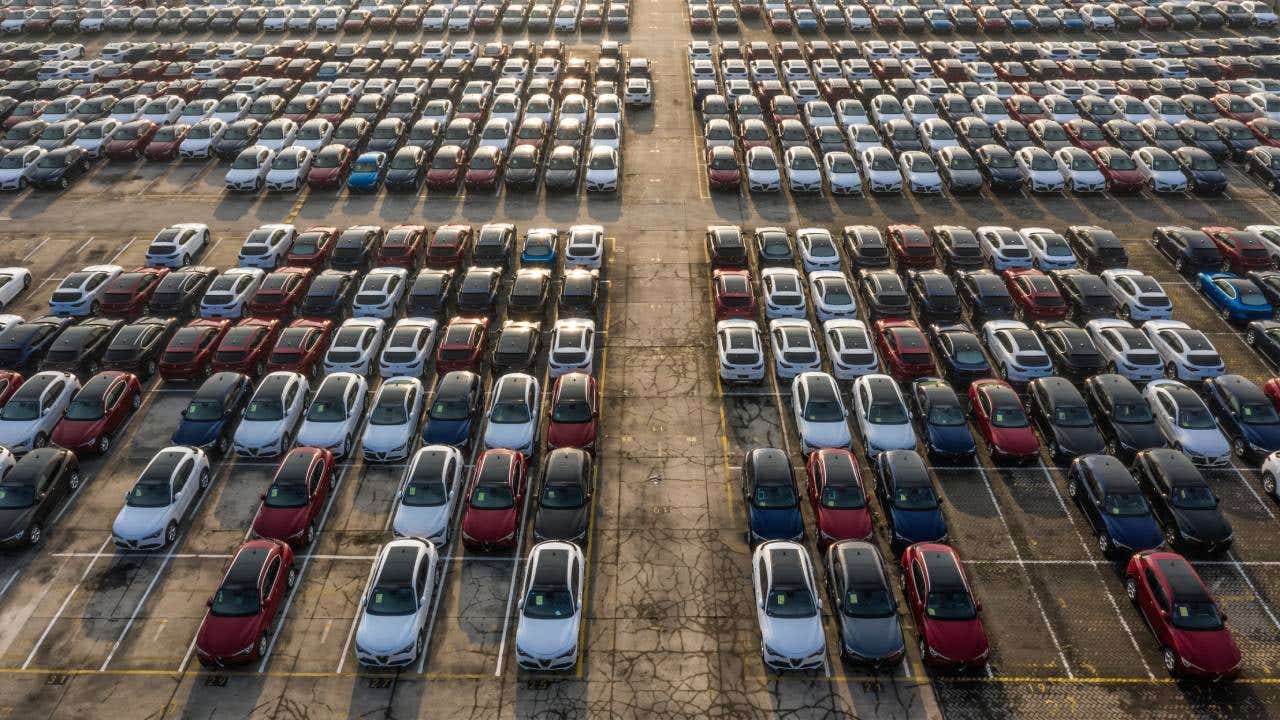Auto loan debt reaches $1.52 trillion

The Bankrate promise
At Bankrate we strive to help you make smarter financial decisions. While we adhere to strict , this post may contain references to products from our partners. Here's an explanation for .
The third quarter of 2022 brought a continued exploration of the “new normal” following the pandemic, fear of the looming recession and an increase in household debt. Most notably, auto loan debt hit $1.52 billion, which makes up for more than 9 percent of all household debt. On top of that, delinquencies have increased to near pre-pandemic levels according to Experian’s third quarter report, with 60-day delinquencies for new car loans sitting at 0.48 percent and used car loans at 1.17 percent.
An unfortunate mixture of factors has created this increase in auto loan debt. One is remaining supply chain issues leaving record-high vehicle prices. Second are steep interest rates across the board for borrowers. This is especially true for those with bad credit who hold a higher likelihood of falling behind or missing a payment.
Debt and delinquency statistics
- Overall loan balances grew 7.6 percent in the third quarter of 2022.
- The average car loan balance across the country is $5,210.
- Since the start of 2022, auto loan rates have increased by 1.77 percentage points for a 60-month new car loan and 1.78 percentage points for a 48-month used car loan.
- Loans that are 30 days delinquent increased to 2.19 percent in the third quarter of 2022 compared to 1.66 percent in 2021.
- Loans that are 60 days delinquent have increased to 0.81 percent in the third quarter of 2022 compared to 0.55 percent in 2021.
- Men have 16.3 percent more auto loan debt than women.
- Total auto loan and lease debt balance was 1.43 trillion in 2021 compared to 1.6 trillion for student loans.
A scarcity of vehicles has pushed prices higher
One cause of the increase in auto loan debt over the recent years has been fewer cars available, explains Bankrate Chief Financial Analyst Greg McBride, CFA.
“The shortage of new vehicles created a scarcity that pushed prices higher, and this bled over into used vehicles as more car buyers moved in that direction,” McBride says. And while this trend has been building, “there was an explosion in prices paid and loan balances financed once the pandemic hit.”
McBride furthers this point by explaining that there is no better place to see households living paycheck to paycheck than in the driveway. Drivers have been met with high vehicle prices due to supply chain issues which in turn has led to budget-busting payments.
How the economy affects debt
The state of the economy directly impacts drivers’ ability to purchase, finance and pay off new or used cars in terms of cost and available interest rates. And with 43 percent of economists predicting that recession will continue to grow over the next 12 to 18 months, securing a vehicle is just one expense that will cost more. But even if drivers can afford to finance a vehicle upfront, the high-interest rates make debt and delinquency a possible truth for many borrowers.
Simply, as the economy grapples with steep inflation rates, the Federal Reserve has been working to quell the issue by increasing the benchmark rate. The benchmark rate, set to 4.25-4.5 percent in December. This rate informs how much banks can charge to lend money to other banks, which then affects interest rates for consumer products, like car loans. Even as relief came in the form of vehicle prices declining, high rates may increase the number of individuals falling behind on payments and into debt.
There is a challenging dichotomy between less expensive vehicles coupled with high rates. But as optimistically shared in TransUnion’s 2023 Consumer Credit Forecast, serious auto loan delinquency rates are expected to modestly decline to 1.9 percent in 2023 from 1.95 percent in 2022.
- On average drivers paid an average of $700 per month for a new car and $525 per month as of the third quarter of 2022.
- The consumer price index sits at 298.1 in mid-December, up from 278.9 a year ago.
- The average term for subprime borrowers financing new cars was 74.25 in the third quarter of 2022.
- Average interest rate for new cars in the third quarter of 2022 was 5.16 percent and 9.34 percent for used.
- There is a 65 percent risk of a recession by mid-2024 according to a Bankrate survey.
How to get out of debt
While incurred debt can feel inescapable there are still concrete steps you can take to get out of the hole that missed or late payments have created. Americans had an average balance of $96,371 in 2021 — so if you have fallen into deep debt, you aren’t alone.
Consider the following tips when trying to get out of debt.
Consider debt consolidation
A debt consolidation loan is a form of refinancing your debt. With it, you can save on interest and help you repay debt at a faster rate. To find the best debt consolidation loan compare a few offers. As with any loan, apply for preapproval to lock in the best rate possible.
Reassess your budget
If you owe more than you have in your bank account it might be a good time to reexamine your budget. To adjust the amount you spend, start by taking a look at how much you spend and what you’re spending it on. Try and eliminate common cost items that you can remove or cut down. Any extra cash that comes up can be used to pay down your debt.
Request loan modification
If you are at risk of falling behind on your auto loan, loan modification is a way to change your current loan to better suit your financial situation. Different from refinancing, this process is done with your current lender and will directly change your loan terms. Keep in mind that not every lender will be willing to modify a loan, and you may need to provide proof of your hardship.
Related Articles



